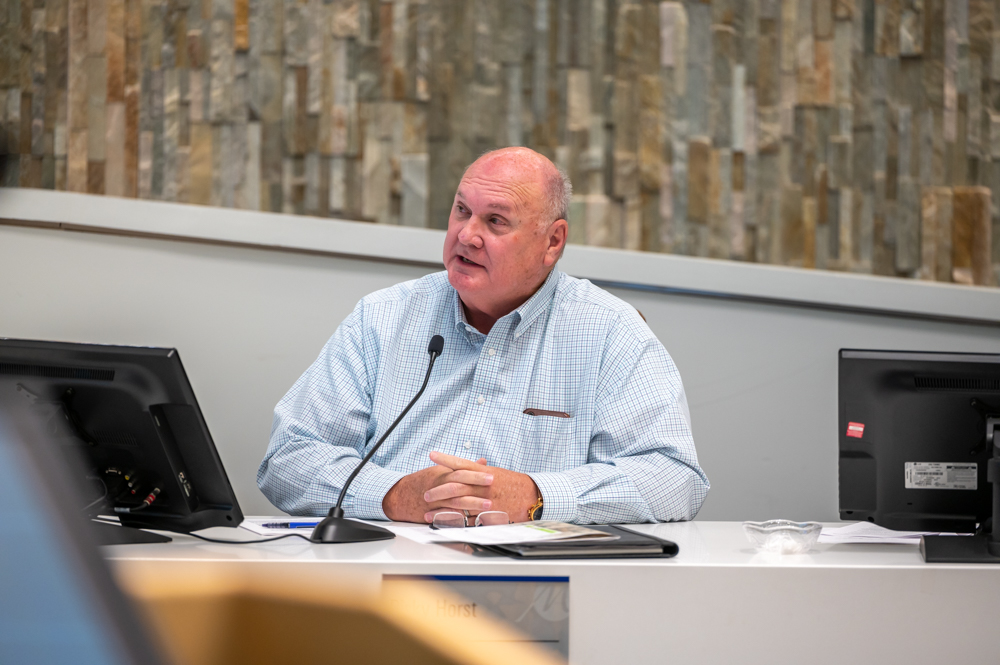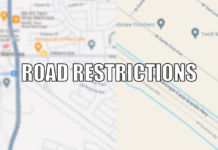Although today we live in a fractious political environment, there is one area of widespread agreement among people and groups across the political spectrum: Economic growth is good. However, economic growth implies growth.
Critics point to the problems economic growth entails. Among the most popular negatives pushed by growth doubters are traffic and traffic congestion.
So, who’s correct? The growth supporters or the growth doubters? Or is there a middle ground?
Growth-supporters argue boosting the size of the economy is necessary in a city increasing in population and desiring a higher standard of living for its residents. With more people, more jobs are needed, additional products and services must be provided and consequently more spending will occur.
While growth-doubters may acknowledge these benefits from faster economic growth, they say it isn’t enough when our roads are so congested.
Most within our community relate traffic congestion to State Route 347. This makes sense as nearly 80% of our population travels north to work each day. This is compounded by additional trips seeking medical and retail services.
The answer is a two-pronged approach. Certainly, the continued work to improve SR 347 is one of them. And because of the work done to date, the Arizona Department of Transportation now lists SR 347 as a statewide top three objective. The second prong consists of creating fewer reasons for you to have to travel north. Economic growth will bring more jobs, more medical and other services, and more retail venues to our community. Creating jobs and lessening the demand for the long morning commute is a shared vision and one that can and is becoming a reality.
We are qualified to improve our city incrementally. But we are not qualified to decide how many people should live in our city. Do we, the “collective,” know what the correct amount of development is for Maricopa? Let’s have the humility to admit we don’t — because we can’t know all the indirect consequences of not letting people live where they want to live, build where they want to build and open businesses where they want to open businesses. Growth will create needs and growth will fulfill those needs, whether it be for the individual, family, business or community.
520-316-6811
Office of the City Manager
39700 W. Civic Center Plaza
Sponsored content





![City gave new manager big low-interest home loan City Manager Ben Bitter speaks during a Chamber of Commerce event at Global Water Resources on April 11, 2024. Bitter discussed the current state of economic development in Maricopa, as well as hinting at lowering property tax rates again. [Monica D. Spencer]](https://www.inmaricopa.com/wp-content/uploads/2024/04/spencer-041124-ben-bitter-chamber-property-taxes-web-218x150.jpg)

![3 things to know about the new city budget Vice Mayor Amber Liermann and Councilmember Eric Goettl review parts of the city's 2024 operational budget with Mayor Nancy Smith on April 24, 2024. [Monica D. Spencer]](https://www.inmaricopa.com/wp-content/uploads/2024/04/spencer-042424-preliminary-budget-meeting-web-218x150.jpg)





![Alleged car thief released without charges Phoenix police stop a stolen vehicle on April 20, 2024. [Facebook]](https://www.inmaricopa.com/wp-content/uploads/2024/04/IMG_5040-218x150.jpg)




![City gave new manager big low-interest home loan City Manager Ben Bitter speaks during a Chamber of Commerce event at Global Water Resources on April 11, 2024. Bitter discussed the current state of economic development in Maricopa, as well as hinting at lowering property tax rates again. [Monica D. Spencer]](https://www.inmaricopa.com/wp-content/uploads/2024/04/spencer-041124-ben-bitter-chamber-property-taxes-web-100x70.jpg)
First off, let’s be very clear about “Sponsored content” where the city manager changes the definition of what it means for him to be doing a good job, or where a local realtor tells you now is a great time to buy or sell your house – these sort of articles do not actually constitute “news”, and are really just disguised advertisements. I get that there isn’t enough actual news in this small town to fill a regular periodical so the rest of the space just gets filled with paid ads, but I find it to be a generally reprehensible practice to disguise ads as news like this, and inMaricopa does this regularly.
To address Rick’s “sponsored content” specifically – what a load of bunk. The article starts off by presenting statements rife with logical fallacies (Appeal to Money, Argument from Popularity, Bifurcation, Division, False Dichotomy, Oversimplification, Traditional Wisdom…) then quickly moves on from there by asking questions that assume those fallacious arguments are factual.
It’s understandable why Ricky would be concerned with city growth and the traffic implications it has for a city with only one main road in or out of town, especially when that road has the reputation for being one of the most dangerous stretches of asphalt in the entire state. Rick is either misunderstanding or misrepresenting this correlation with his proposed solutions however.
Adding more retail jobs in Maricopa will not dramatically reduce traffic on the 347. It will alleviate some need to travel out of town for shopping, but is only providing entry level jobs for Maricopa residents – nobody will be quitting their office job in Chandler to work at a new Target in Maricopa, they will still be commuting on the 347 every day.
Adding more blue collar or white collar jobs in Maricopa will quite obviously increase rather than reduce traffic. It is very unlikely that any new factory or office work that cropped up in Maricopa would be a direct replacement for jobs held by current residents. This means most of these jobs would need to be filled by new people moving to Maricopa with their families, drastically increasing congestion in town – you will need to leave an extra 10-15 minutes early for that morning commute to even make it out of town and onto the 347.
Also I don’t know if Rick has considered that new businesses in Maricopa could actually make the 347 more dangerous by increasing the amount of semi truck traffic. How do you think all those businesses will get supplies and products in and out of town? Probably by driving big trucks on the same road the rest of us are already stuck on.
What Rick seems to be entirely missing with his false premise here is that it’s not about the scale of the growth, it’s the shape of it. This focus on economic growth is misplaced – the focus should be on fostering and developing our communities first and foremost.
It’s not even really Rick’s fault – Maricopa has simply followed the playbook of the “Suburban Experiment” as most small towns across the country have done for decades now. The data is in on the Suburban Experiment model though, and the evidence shows that it bankrupts communities and designs dangerous spaces. This is particularly true with Maricopa’s location and our heavy reliance on cars to get literally anywhere. I implore anyone who actually holds an interest in making a safe, livable, and financially resilient city to learn more about the nonprofit organization Strong Towns.